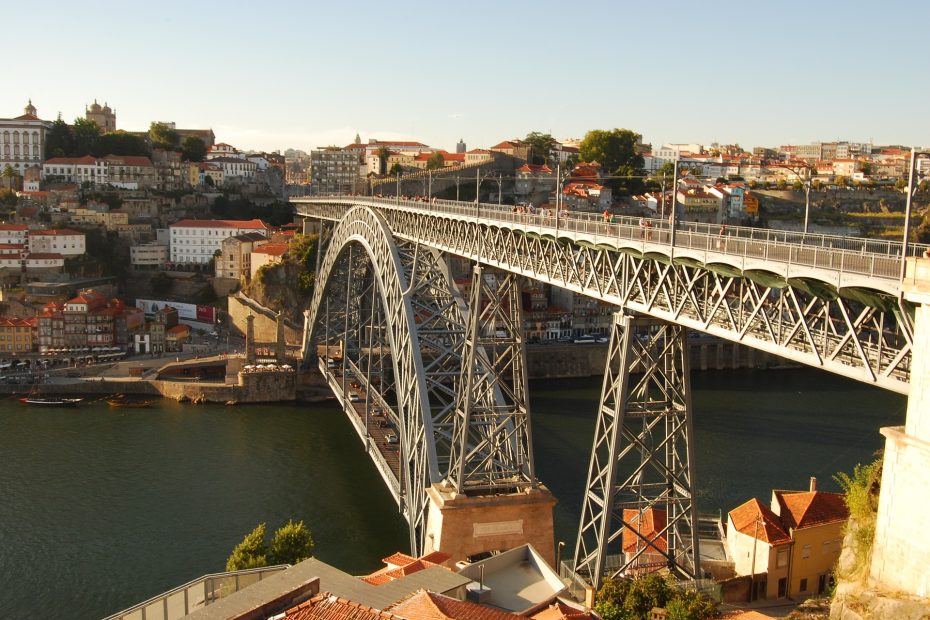The Luis I bridge in Porto
- The story behind Porto's trademark bridge
- The shadow of Gustave Eiffel
- The unknown German bridge builder
- Walk via Sé Catedral over the upper deck bridge
Perhaps the most iconic image of the city of Porto, is the iron double-deck bridge over the Douro River. The Luís I bridge connects Porto with Vila Nova de Gaia, also simply called Gaia. It is one of six bridges that allow you to cross over the river between the twin cities of Gaia and Porto. The metro runs over the top deck, but you can also walk over it to take in the view at your own pace. Highly recommended, the views over the river are breathtaking.
Before we move onto this striking bridge, an oft-repeated misconception must be corrected first. The bridge was built by Gustave Eiffel, the same man who built the Eiffel Tower in Paris, is an often repeated comment. No, that is not correct. But Porto has a bridge built by Eiffel, right? Well, yes. Only that is a different bridge, Ponte de Maria Pia. And it is less visible from the center of the city.
Although the dominant and characteristic double-deck bridge shows typical Eiffel features, its original designer has a different name: Théophile Seyrig. It won’t come as a surprise that he and Eiffel were no strangers to each other. The German engineer was one of the co-founders of G. Eiffel et Cie, Gustave Eiffel’s company.

Seyrig was also involved in the construction of the ‘real’ Eiffel Bridge in Porto. The Ponte de Maria Pia was inaugurated in 1877 and functioned until 1991. This single railway bridge served specifically for train transport and directly connected Porto, via the Campanha station, with Lisbon. While Ponte de Maria Pia is mainly seen as Eiffel’s brainchild, it was his partner Seyrig who was responsible for the design encompassing the typical arch construction.
When the municipality devised a plan for a new bridge a few years later, Seyrig and Eiffel had already become at odds with each other. Seyrig had left Eiffel et Cie and exchanged it for a Belgian company. Both Eiffel and Seyrig’s companies submitted a proposal for the construction of the new bridge. There were numerous entries, but at the end, it was Seyrig who won the assignment. The growing traffic in the city at the end of the 19th century required a new route across the river. In order to rectify this issue, the municipality of Porto proposed the construction of a new double-deck bridge. It was a smart solution to make a more efficient use of the bridge. Nowadays, traffic crosses the river via the lower deck every day; pedestrians, taxis, buses, and sometimes weary cyclists in between.
Finally, Seyrig was able to start the construction of the bridge in 1881. On October 21, 1886, the municipality, together with Seyrig, inaugurated the upper deck. More than 2 years later, the lower deck was also made available to Portuenses, as the residents of Porto are called.
As previously mentioned, it is especially worth crossing the upper deck. The easiest way is to head towards Sé Catedral, the prominent cathedral with 2 high towers. The bridge is located right next to it. Take the centrally located São Bento train station as a reference point: from there walk up Avenida Afonso Henriques towards the cathedral. Once you reach the top, do not turn right towards the cathedral, but keep walking straight on Avenida Vimara Peres. This road naturally turns into the upper part of the Luís I bridge. Have fun!


